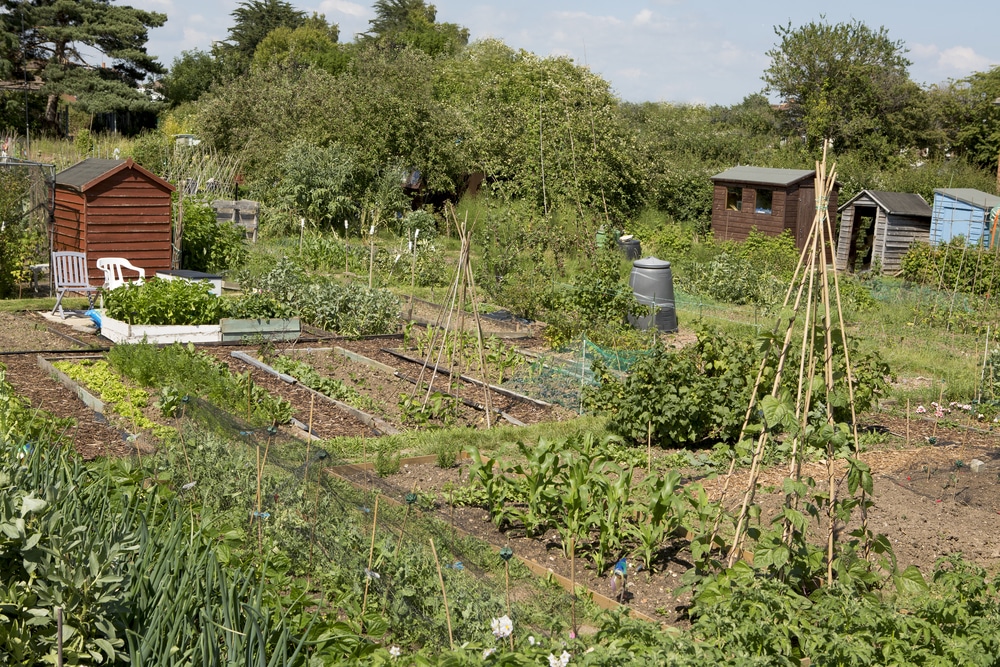Getting an allotment can be an exciting prospect for any gardener. The chance to have more space to grow a wider variety of plants is appealing. However, with this increased space comes increased responsibility. It’s important not to get over-enthusiastic and plant more than you can reasonably manage. The key is working out what to grow to get the maximum rewards for the time and effort you put in.
Choose Crops You’ll Actually Eat
There’s no point filling your allotment with vegetables and fruits if you don’t actually enjoy eating them When deciding what to grow, think about what you’d normally buy from the grocery store or farmer’s market Opt for allotment staples like potatoes, carrots and lettuces but also consider your favorite foods. If you love making curries, grow coriander and chilies. If you can’t get enough tomatoes, dedicate a portion to different tomato varieties.
Focus on Costly and Hard to Source Produce
It’s also wise to devote space to crops that are expensive to buy or hard to find in shops Soft fruits like raspberries, blueberries and strawberries can be costly in stores but grow abundantly on allotments Heirloom varieties of vegetables that aren’t commercially grown are interesting to try. Crops that are out of season often have high price tags, so growing your own means you can enjoy them all year round.
Maximize Space With Dual Purpose Crops
Make the most of your allotment area by selecting dual purpose crops. For example, grow beetroot and harvest the nutritious leaves as salad greens before pulling up the roots. Let radishes and turnips grow large and eat the peppery leaves as well as the roots. With a little planning, a single crop can provide two harvests.
Cut Down on Food Miles
An allotment is the ultimate way to reduce food miles and eat local. Shop-bought fruit travels thousands of miles before hitting supermarket shelves. With an allotment, you can eat homegrown produce fresh from the soil. Opt for tree fruits suited to your climate so you can pick apples, plums and cherries at their seasonal peak. You’ll enjoy better flavor while cutting down on transport emissions.
Focus on Low Maintenance Crops
Carefully consider the effort needed to grow different crops if your time is limited. Choose prolific producers like lettuces, potatoes, squash and chillies that don’t require much upkeep once planted. Crops with short harvest windows like peas and beans need frequent picking to catch them at their prime. Go for hardy vegetables like beetroot, kale and carrots that tolerate some neglect over fussy crops.
Use Coverings to Reduce Weed Growth
Weeding is one of the most time-consuming allotment tasks. Lay cardboard or black plastic mulch around crops to suppress weeds and cut down on hoeing. For thirsty plants use drip irrigation hoses rather than manual watering. Make a few trips to deeply water rather than quick sprinkles. Set up rain barrels to collect water for irrigation.
Protect Against Pests
Sadly, pests are a fact of allotment life. Take preventative measures like netting brassicas against cabbage butterflies and pigeons. Fence off plots vulnerable to rabbit damage. Snails and slugs need vigilance – go on evening patrols and use organic deterrents. Accept some pest damage but intervene before populations explode out of control.
Enjoy Experimental Crops
After accounting for practical considerations, allocate some space for fun. Satisfy a child’s curiosity by letting them grow giant pumpkins and sunflowers. Trial new varieties of tomatoes and peppers to find new flavors. Plant a chef’s herb selection like chervil, lovage and lemon verbena. Growing should be enjoyable – make room for experimentation.
The most rewarding allotment prioritizes crops you love eating and realistically have time to manage. With smart planning, you can grow a diverse harvest with less effort. Don’t let the expanded possibilities lead to an overwhelming workload. Focus on quality over quantity for a bountiful and enjoyable allotment experience.
Growing in your allotment
You have an allotment ready to grow things in, but what should you grow and where should you start? We think there is nothing better than eating something you grew yourself. Feeding your family with organic, home grown produce is extremely rewarding. Not everything will be a success, you will battle with slugs and snails, but don’t give up. Here is a list of top vegetables and fruits to grow in your allotment.
Top 10 Veg to Grow
Deciding which variety of vegetables to grow can prove to be challenging. Here are our top 10 veg to grow, we hope this gives you.
10 MISTAKES TO AVOID ON YOUR FIRST ALLOTMENT PLOT / ALLOTMENT GARDENING FOR BEGINNERS
FAQ
What is the best thing to grow in an allotment?
What can you keep on an allotment?
What is the ideal allotment layout?
What is the best feed for allotments?
|
Bonemeal
|
NPK 3.5-17-0
|
Releases nutrients slowly
|
|
Dried Blood
|
NPK 6-10-10
|
Good for leafy crops eg lettuce, spinach and cabbage
|
|
Epsom Salts
|
NPK 10% magnesium
|
Good for house plants and Tomatoes
|
|
Fish, Blood and Bone
|
NPK 5-5.6-5
|
Encourages strong growth
|
|
Growmore
|
NPK 7-7-7
|
A balance of all 3 plant foods
|

